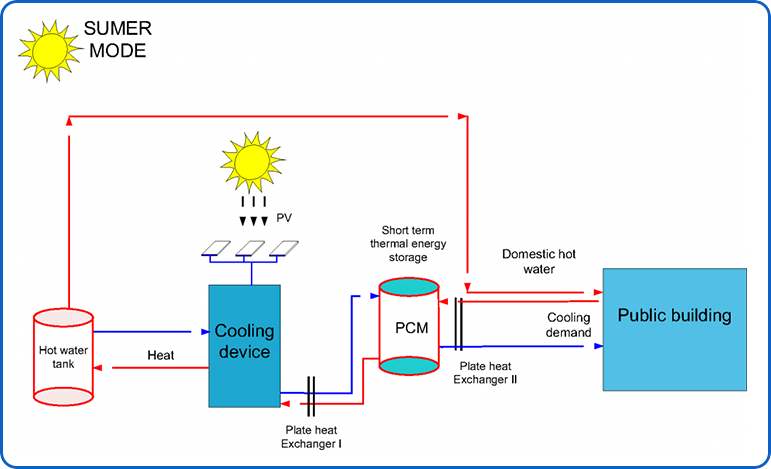The project is essentially about cooling public buildings (hospitals, universities, health care centers, offices, etc.). The development of solar cooling systems is important in terms of reducing the primary energy consumption of buildings and their current dependence on grid energy rather than on-site renewable energy generation. Decarbonization of buildings is key to achieving the goals set forth in the Paris Accords. Demand for space cooling increased by more than 33% between 2010 and 2018, and by 5% between 2017 and 2018. While providing heat is still the main final energy demand in the building sector, space cooling remains the fastest growing final consumption. The issue of solar-powered air conditioning is extremely important in the context of technical, residential and social conditions. Year after year, the demand for air-conditioning equipment is increasing, and it is no longer a luxury, but an everyday necessity due to advancing climate change.
The innovation of the cooling system proposed under the COOLSPACES project is mainly manifested in the refrigerants used. The pilot installation will use a two-component or three-component mixture, of which hydrocarbons (HC) will be an important component. Thanks to the use of the above solution, it will be possible to achieve a low environmental impact of the refrigerant (GWP below 150), which is in accordance with the provisions of Regulation (EU) No. 517/2014. At the same time, it will be possible to improve the efficiency of the cooling cycle by improving the thermodynamic properties of the substance in relation to pure hydrocarbons, making it possible to achieve high energy efficiency (EER) of the device. Operation of the system in conjunction with short-term thermal energy storage will extend the system’s range of operation beyond the hours of sunlight necessary to run the air conditioning system. This will improve the energy efficiency of the building by pre-cooling it during the morning hours. Another innovation of the system is the use of phase change materials (PCMs) in the form of interchangeable energy storage cartridges, which, combined with the ability to infinitely regulate the refrigerant’s evaporation temperature, will allow optimal control of the phase change temperature and increase the ability to accumulate cooling, without extensive technical interventions in the storage tanks. Finally, the use of photovoltaic panels as a power source for inverter compressors and an autonomous operation control system will enable the optimal use and distribution of the collected energy between direct cooling of the building and storage in phase change materials. Another advantage of the solution is the reduction of energy losses through the use of condensation heat to heat water for domestic use.





